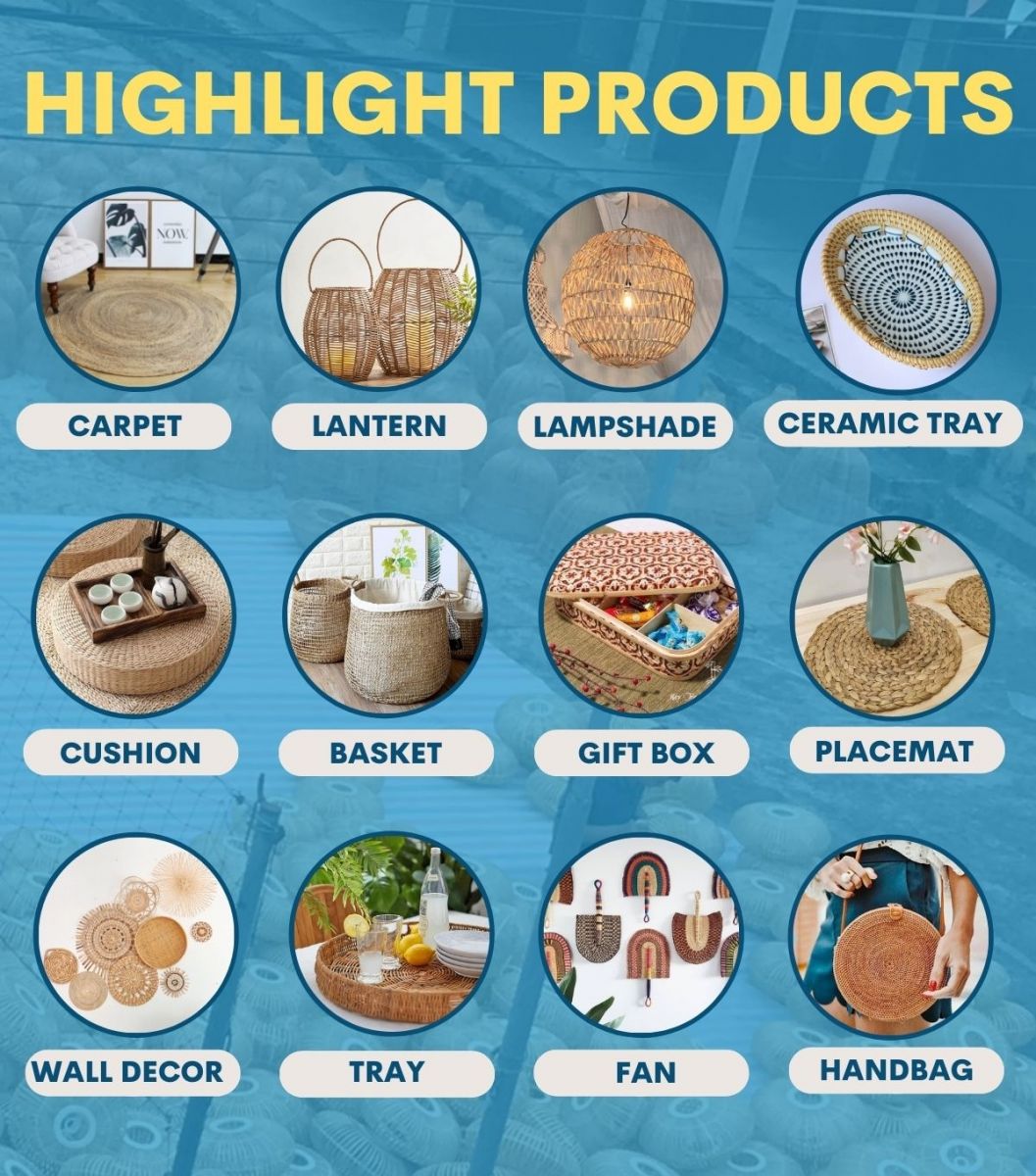Bamboo and rattan craft villages have been formed over thousands of years associated with the development history of Vietnam. Although going through many ups and downs, today craft villages are undergoing many changes, gradually forming production and export centers in large quantities. Handicraft products with export value account for a large proportion and are loved in many major markets: Europe, the US, and the EU.
The production process of each product is created by the meticulous hands of Vietnamese artisans. The article will show the production process of these delicate products.
1. Selecting rattan and bamboo materials
After planting and in the harvest season, people will sort and choose the best materials to harvest. In order to create good, quality products, artisans must first understand the raw materials they will make. The best type of bamboo must be the type of bamboo that is not young, not old, upright, and with high hardness. As for rattan, it is necessary to choose a type of sufficient size, about 5m long, straight, round, and free of pests. Plants that are too old or too young are not good.
2. Drying in the sun
After harvesting, the raw materials will be dried in the sun.
For bamboo materials: Bamboo is cut down and then dried again. Then treated against termites. There are two common ways to fight termites: either bamboo is put into the XM5 chemical bath. It is an easy-to-use and very safe forest product preservative. Or it is soaked in water according to the traditional manual method.
For rattan materials: Rattan has a lot of sharp thorns around, so the preliminary processing of rattan needs to be very careful. The outer thorny shell will be peeled off, revealing the white rattan flesh inside. After that, rattan is also dried slightly, to move to the initial processing stage.
%20(1).jpg)
.jpg)
3. Handing raw materials
To create good products, special artisans must pay attention to the processing of materials to create the desired size.
For bamboo materials: Bamboo is shaved, polished with sandpaper, then put in the oven, used straw or bamboo leaves to smoke, which has the effect of creating color, helping to dry the material, and helping to prevent warping. After smelting, the bamboo will have a western brown or dark brown color. When the bamboo is cooled, it will be bent straight.
As for the rattan material: Rattan is dried quite carefully, both to dry the material and to get the color. When drying, if there is too much smoke or too little smoke, the clouds will turn red. As for the drying process, if it rains, the rattan fiber loses its beauty. If it is exposed to the sun, the rattan fibers lose their freshness. If the rattan is not dry enough, the skin will be dull, if the cloud is too dry, it will lose its soft shine. Therefore, the process of drying rattan requires a lot of work from craftsmen.
4. Exactly manufacturing
Each product will have a sample in advance, artisans will meticulously hand-woven and knit each product from pre-processed materials.
Rattan and bamboo want to be used, must be chopped and plucked. The size and length of the yarn will depend on the specific type of product. Usually, the larger yarn will be used to knit the product. Microfiber is used to make more elaborate products. Especially the rattan splitting needs to be very attentive because rattan fibers often have uneven nodes. So when splitting, you have to be very skillful and skillful so that the rattan fibers are even.
The quality and aesthetics of rattan-bamboo fibers are one of the leading factors determining the value of traditional bamboo and rattan products. After the knitting is complete, the product can be glued, painted, surface glossy, and trimmed again for the most complete. The materials, after being completely processed, will be knitted and shaped by the talented and skillful hands of skilled craftsmen to become beautiful and attractive products.
The bamboo and rattan products have many different knitting styles. Depends on each product and each artist's skill. To decide the most suitable and beautiful knitting style. Products will be knitted directly or based on an available steel frame, knitted according to the creative designs of artisans or at the request of customers.
.png)
5. Final product
After the knitting is complete, the product can be glued, painted, surface coated, trimmed to perfection, then preserved or shipped. The final products are extremely delicate and unique works.
We are Kingcraftviet, the top leading exporter of bamboo and rattan in Vietnam. If interested in the product, or contact us to get the best products.
Other products: https://kingcraftviet.com/index.php/brand/bamboo-products
We are here to match your requirement. Do not hesitate to contact us for the best price!
If you want to place an order with us, feel free to contact us below:
Website: www.kingcraftviet.com
Email: [email protected]
Hotline: +84 966420187 (Whatsapp)
See more our channel on:
Instagram: https://www.instagram.com/king_craft_viet/
Fanpage: https://www.facebook.com/kingcraftviet
Linkedin: https://www.linkedin.com/company/king-craft-viet-the-world-of-viet-nam-s-handicraft
Youtube: https://www.youtube.com/channel/UCp1qBzbIV7zZ1VUsSf-v4lg/featured
Kingcraftviet.com - Vietnam Handicraft Exporter




